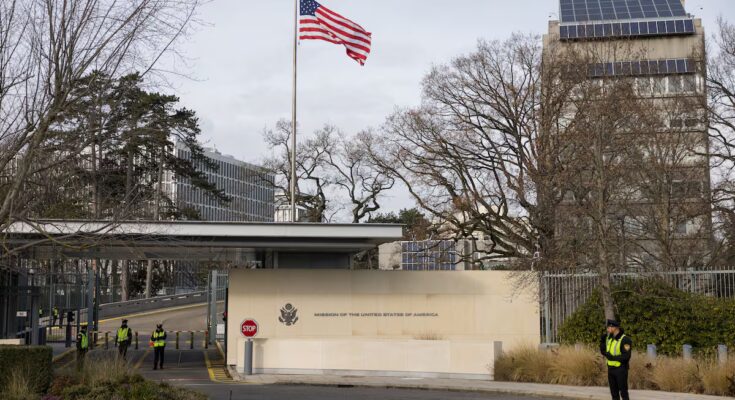Representatives of the United States, Ukraine and Europe will meet this Sunday in Geneva (Switzerland) to discuss the controversial Russian-American peace plan that outlines an agreement to end the imperialist war launched by the Kremlin against Kiev in February 2022. The roadmap, drawn up without the participation of Ukraine or Europe, is described by most critics as a “wish list” for Putin. In fact, American senators maintain that the sole author was the Kremlin. This plan requires Ukraine to give up territory, limit its military and give up its ambitions to join NATO.
European leaders are still shocked and trying to digest the fact that, once again, they have been sidelined on an issue that is an essential part of Europe’s security architecture. They now appear to be taking the Russian-American proposal as a basis, but are trying to push through a number of key amendments to help Kiev achieve better terms.
The European idea, according to sources close to the negotiations, is to obtain a shield for Ukraine with solid security guarantees that would allow it to be defended in the event of a new aggression (something that would work as a deterrent for the Kremlin), in addition to the promise that Kiev will not be forced to limit the weight of its army and its weapons, as indicated in the 28-point Russian-American plan. An attempt is also made to clarify the clauses according to which the invaded country would be forced to renounce the territory.
The Europeans, who have been debating for weeks on the European Commission’s proposal to hand over to Kiev 180 billion in Russian sovereign assets immobilized in EU territory (especially in Belgium) due to sanctions, also ask that these funds be handed over to Kiev as compensation and used for reconstruction. Meanwhile, the Russian-American plan envisages that about 100 billion of Russian assets will be invested in reconstruction and investments in Ukraine, but in a format led by the United States, which would receive 50% of the benefits. Europe would also add, according to this plan drawn up without the Europeans, another 100 billion for reconstruction.
Germany, France and the United Kingdom have sent national security advisers to the Geneva meeting, which is attended by US Secretary of State Marco Rubio, White House special envoy for Ukraine Steve Witkoff and a Ukrainian team led by Andrii Yermak, chief of staff to Ukrainian President Volodymyr Zelensky. The European Union also sent representatives to the meeting where the Europeans want to buy time for Ukraine.
US President Donald Trump set the deadline for accepting the plan on Thursday in Kiev (Thanksgiving Day in the US). Despite this very peremptory timetable, he has hinted in the last few hours that this roadmap may not be the final document and that, depending on Ukraine’s response, he may be willing to extend the deadline.
“Any credible and sustainable peace plan must, above all, stop the killing and end the war, without sowing the seeds of future conflict,” Ursula von der Leyen said in a video statement this Sunday. The European Commission president elaborated on the position of Kiev’s Western allies that “borders cannot be changed by force” and that the invaded country should not reduce its army. “The centrality of the European Union in ensuring peace in Ukraine must be fully reflected”, insisted the head of the EU executive, who is participating in the G20 summit in South Africa.
Meanwhile, the Russian-American plan continues to receive criticism. On Saturday evening, a group of senators (including Republicans) assured that Rubio had told them that the roadmap was a Russian author. After the controversy, before leaving for Geneva, the US secretary of state insisted that the 28-point plan was “written by the United States” and that it was based on “contributions” from both Russia and Ukraine.
On Saturday, Ukraine’s allies at the G-20 summit in South Africa released a statement saying the 28-point plan requires “additional work” and that as it stands it would “leave Ukraine vulnerable to attack.”
Together with the leaders of Europe, Canada and Japan, we have declared our willingness to work on the 28-point plan despite some reservations. However, before starting our work, it would be good to know for sure who the author of the plan is and where it was created.
— Donald Tusk (@donaldtusk) November 23, 2025
“Together, the leaders of Europe, Canada and Japan have declared our willingness to work on the 28-point plan, although we have some reservations. However, before starting it would be good to know for sure who the author of the plan is and where it was created,” Polish Prime Minister Donald Tusk correctly wrote on social media.



